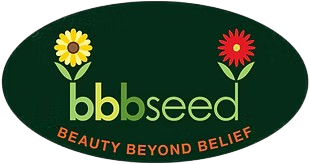Tomato Lovers: It’s Time! Make Your Decisions!
Heirloom Vegetable Seeds
by Sandy Swegel
If you don’t already have your tomatoes growing….this is The Day. April 1st is my official day to start my tomatoes indoors. I’m in Zone 5 and last frost is six weeks away. You may start yours earlier if you live in a warmer place or have walls of water or other season extenders. No matter where you are, if you want tomatoes and haven’t seeded them yet…Do It Now. Or start a new variety or two because come late summer, we can’t possibly have too many tomatoes.
How to Decide What Tomato to grow.
Gardeners used to have only about five different varieties of tomatoes available to them. Now there are literally hundreds. Here are the tomato seeds we carry and the reason why you might grow each of them:
Beefsteak
Everybody knows this tomato. It’s the perfect big slice for hamburgers on the grill. It’s a manly tomato….a big sturdy tomato that holds up on the grill and on sandwiches.
Black Krim
This is my favorite tomato. It has a rich heirloom taste like many of the black tomatoes and it pumps out lots of medium-sized tomatoes. This makes it perfect for eating right off of the plant on a hot summer day. Earlier than some heirlooms.
Cherokee Purple
Cherokee isn’t just a marketing name. This is an heirloom tomato saved by the Cherokee people pre-1890s. Another black tomato with great taste. Gnarly looking tomatoes, too, which makes it even more interesting.
Amish Paste, Organic
This is a “paste” tomato. It’s very meaty and not too watery. It’s ideal for making sauces. Because it is so meaty, it’s also excellent for sun-drying. It is determinate, so most of the fruit ripens at the same time which is perfect for canning.
Aunt Ruby’s German Green
Remember to label this one in your garden. I spent one year waiting for them to turn red. Why grow green tomatoes? Because they have a unique flavor that is fresh and sweet. The flavor is lighter than the dark tomatoes. Aunt Ruby’s German Green is often a winner is our back yard taste tests.
Pink Brandywine
Brandywine is well known as an heirloom that defines what tomatoes “used to taste like.” These are big delicious fruit. Their growing season is a little longer so you have to be patient….but then they produce lots of tomatoes. And give this plant more space. It’s a giant.
Red Pear
Red pears are smaller pear-shaped tomatoes and are an heirloom dating back to colonial times. Pear tomatoes taste like regular tomatoes but are really prolific. In the olden days, people preserved them as “tomato figs.”


